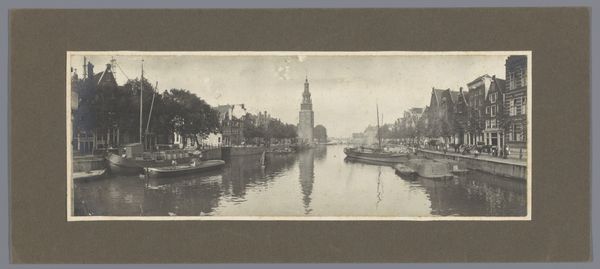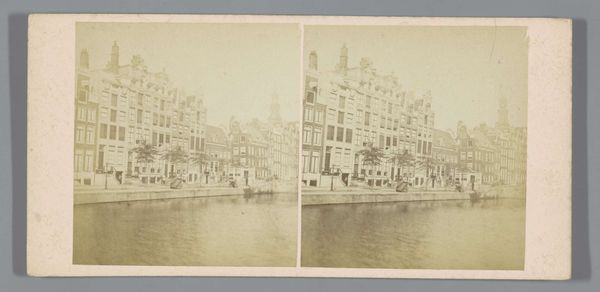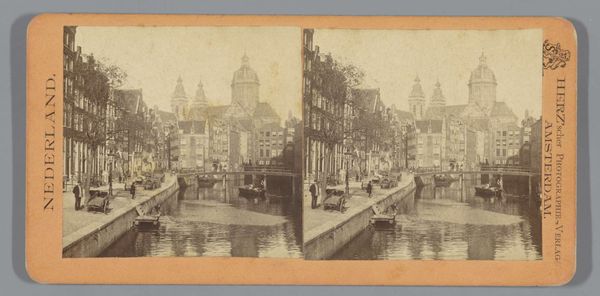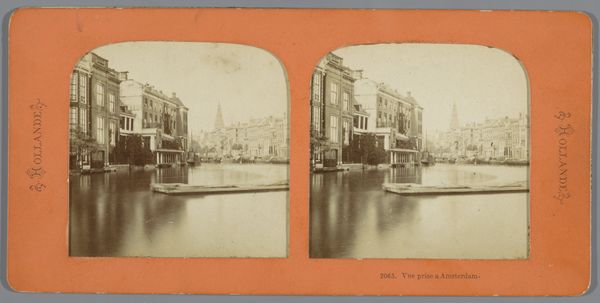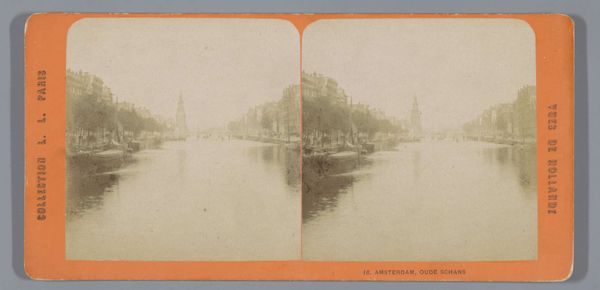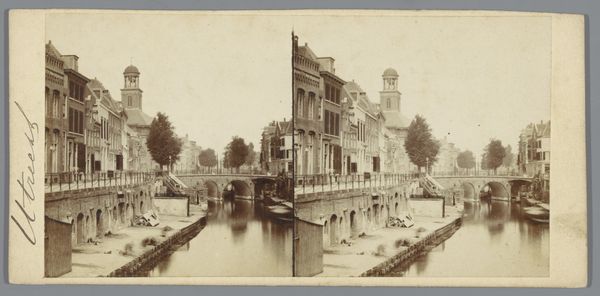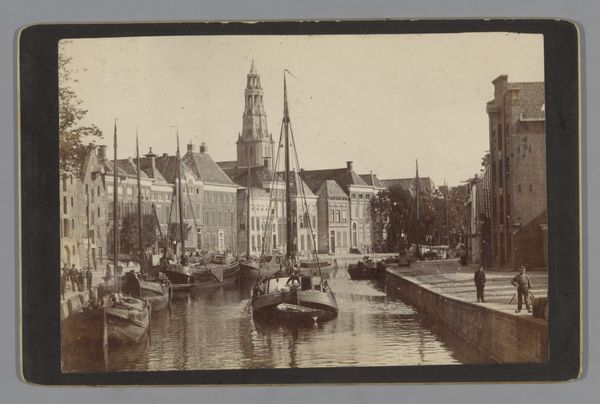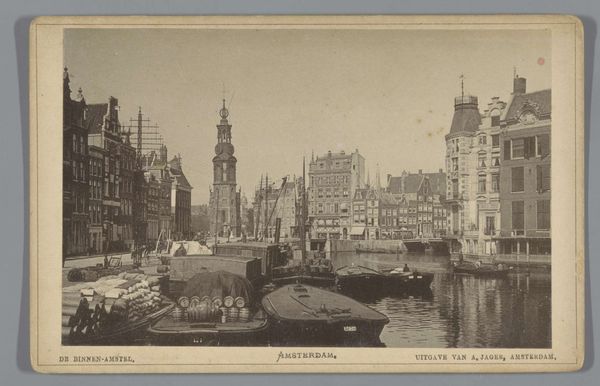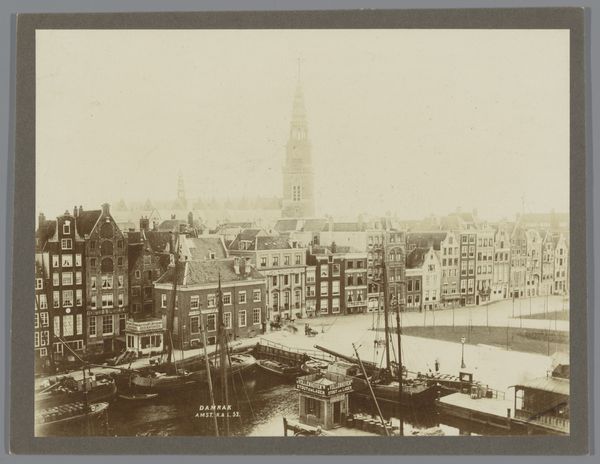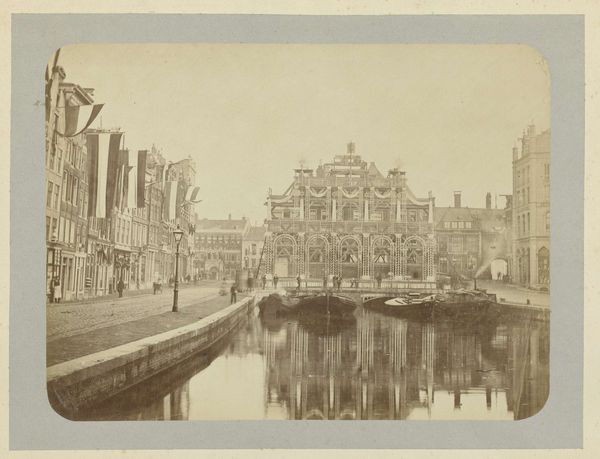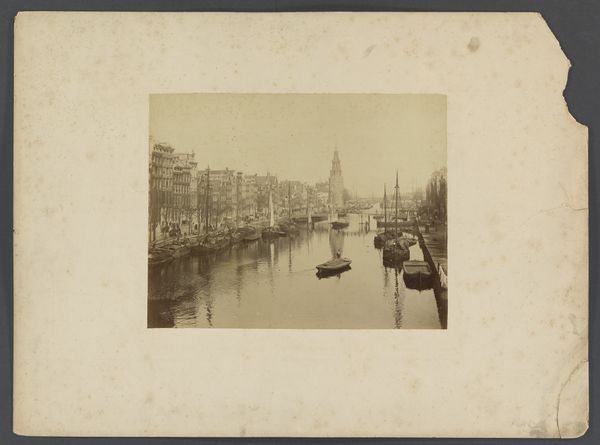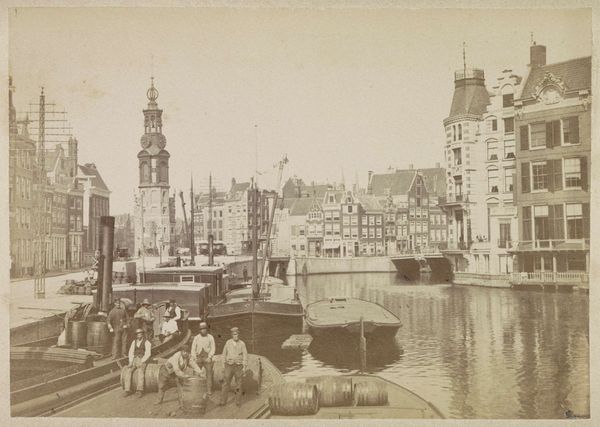
photography
#
dutch-golden-age
#
photography
#
cityscape
#
realism
Dimensions: height 87 mm, width 178 mm
Copyright: Rijks Museum: Open Domain
Curator: We're looking at "Gezicht op de Montelbaanstoren in Amsterdam," a photographic print by Jules Hippolyte Quévat, dating roughly from 1860 to 1875. It resides here in the Rijksmuseum collection. Editor: The image feels incredibly balanced. The dark, almost sepia tones create a beautiful contrast with the geometric precision of the tower against that stunning reflected light on the water. It feels very...stable, yet full of latent energy in those shimmering water reflections. Curator: Indeed. This image appears to be a stereoscopic card—hence the duplicate image—intended for viewing in a stereoscope. Mass produced, these cards helped democratize access to art and cityscapes, contributing to a burgeoning tourist industry and national identity. This card’s framing is telling. Notice the branding around the image's edges declaring, "Hollande Pittoresque," offering viewers a romanticized view of Dutch life. Editor: You're right; one can immediately perceive its artificiality and curated construction. This photographer manipulated light and composition, even though this is purportedly ‘objective’ representation—photographic. Observe how the towering edifice on the one side and the architectural line formed by houses on the other create contrasting perspectives and angles with varying shapes. I note the reflections in the water doubling the city’s visual texture, enhancing this calculated perspective. Curator: The choice of the Montelbaanstoren is itself significant. The tower had long stood as a symbol of Amsterdam’s resilience against sieges and floods, making it a powerful emblem during a time when national pride and urban growth were closely linked. Disseminating its photographic image across such cards played into that cultural phenomenon. Editor: So, beyond simple visual documentation, this photographer captured cultural value; or do I dare say ‘stole’? This object’s meaning shifts as the material processes of photography were still nascent, and not entirely trustworthy. That visual clarity renders Amsterdam so poetically, reflecting what seems like clarity about Dutch cultural identity…very cunning! Curator: These photographic cityscapes became commodities shaping perception. Mass culture served political aims—all presented in a pleasing format for middle-class consumption. Editor: I came focusing only on balance; but what is balanced representation?
Comments
No comments
Be the first to comment and join the conversation on the ultimate creative platform.
